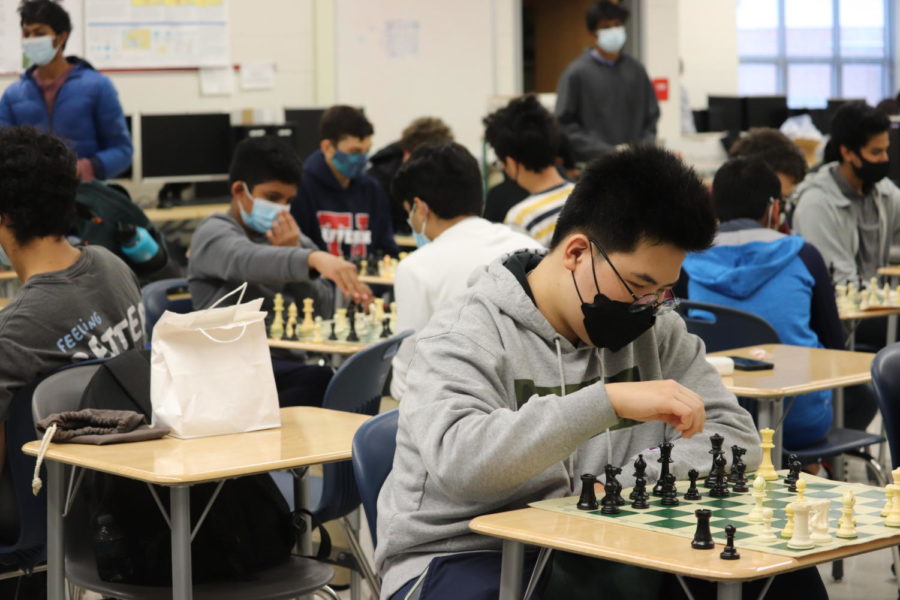A world without queens: gender representation in chess
Jefferson’s chess team meets every Friday during both A and B block, but there are often very few girls who decide to attend, as seen in the photo. “It can seem very daunting at first, especially when you go inside and there are so many guys already there,” co-captain of chess club, Mantra Iyer, said. “It kind of makes you feel a little weird, especially when you’re trying to learn the game.”
May 18, 2022
Thirty-two pieces sit in a line in front of you — eight pawns, two rooks, two bishops, two knights, a queen, a king, and the opposing pieces. A world in 64 squares, the size of a board game. Chess is a place to lose yourself in thought, a place to strategize, a place to call home.
But it isn’t home for everyone.
There is a lack of gender representation in the chess world. Only 37 women are international grandmasters out of the over 1,600 current ones, as determined by the International Chess Federation (FIDE); and of the top 100 current chess players in the world, only a single one is a woman — grandmaster Hou Yifan.
There is also a lack of girls participating in chess at Jefferson. There are many reasons for this, but the main comes down to the lack of female grandmasters as role models for girls in chess.
“If you notice in chess, a lot of the players are male just because there is no representation and a lack of role models,” Heller said. “There have been top female players, but there just aren’t as many role models for [girls].”
The chess gender gap is not a reflection of women’s intellect or ability to think critically. According to a study by Merim Bilalic of Oxford University, the performance differences between men and women are due to participation rates. Should men and women compete in equal proportions in any competition, the results of competitions would even out.
However, it can be difficult for girls to get involved due to the staggering number of men in comparison to women in clubs, classes, and competitions.
“It can seem very daunting at first, especially when you go inside and there are so many guys already there. It kind of makes you feel a little weird, especially when you’re trying to learn the game,” co-captain of chess club and the first female captain, Mantra Iyer, said.
Economic, social, and cultural aspects also affect the gender gap in chess. National federations invest less in female chess players, which makes finding coaches and sponsors more difficult. Female chess players experience a more toxic environment than male players do, as well. They experience hundreds of misogynistic and degrading comments.
Grandmaster Jennifer Shahade put together a large chessboard filled with specific insults she and other chess players have received throughout their careers, titled Not Particularly Beautiful.
At Jefferson, the chess captains often plan to send a team to compete at an all-girls Chicago tournament in the spring next year.
“I’ve played it four or five times and I’ve done pretty well. If we get enough girls participating, we could definitely [attend] that,” Iyer said.
Every Friday B block during 8th period, chess club is available to everyone at Jefferson, and knowledge of how to play the game is not needed. Chess sets and pieces are provided, and everyone is encouraged to join.
“Don’t be intimidated. I know it’s a little scary at first, but you can do it,” Iyer said. “You have the capability to do it. Anybody can play chess.”










